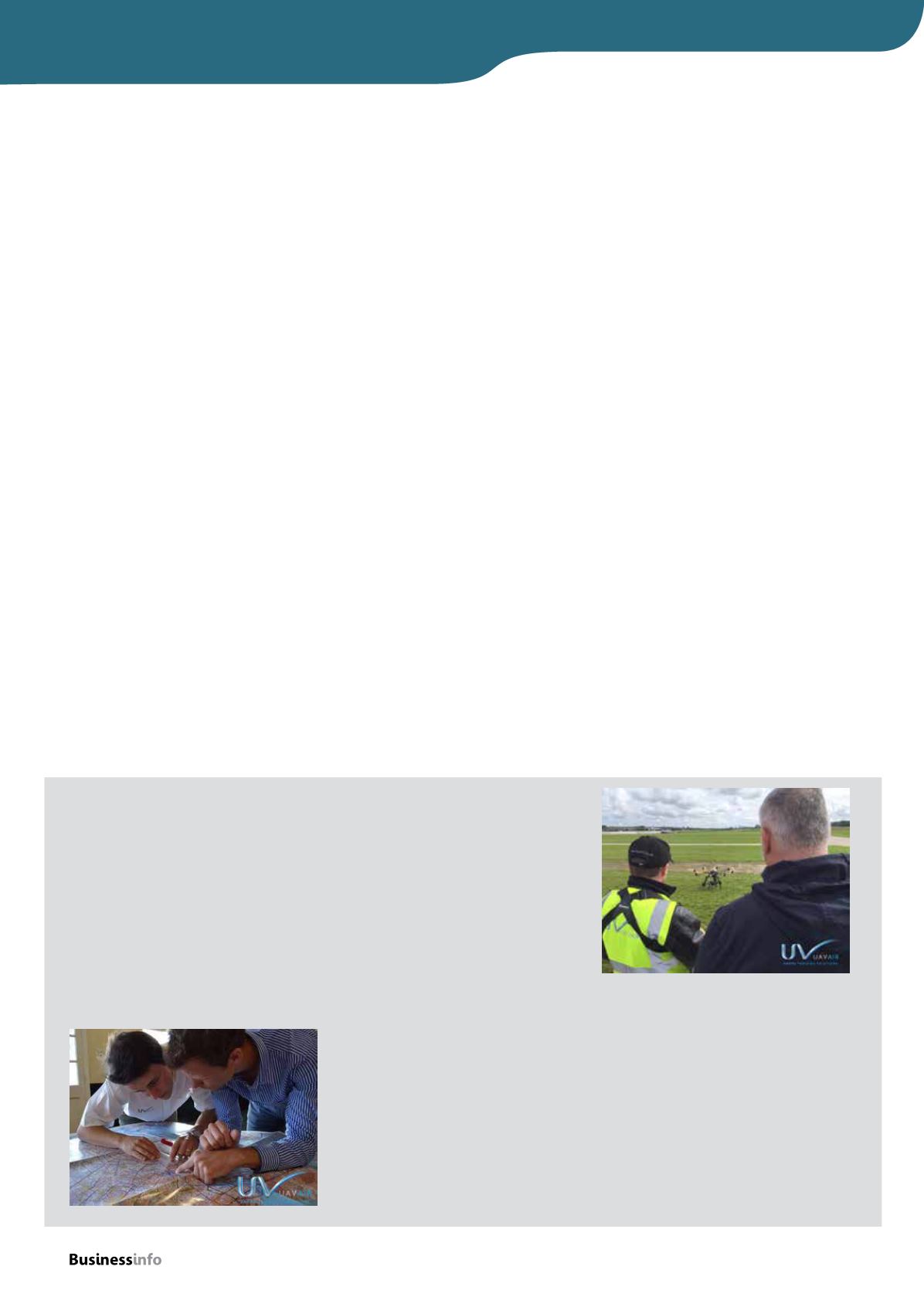
businessinfomag.uk
magazine
32
the future. Drones can be adapted to
almost every industry. They can improve
business flexibility, efficiency and cost-
effectiveness. In addition, they have large
safety and environmental benefits. For
instance, in the telecommunications
sector cell tower inspections and
maintenance are usually performed by
a technician climbing the mast. This is
costly, time-consuming and dangerous.
Drones reduce risk, lower cost and
simplify such inspections.”
Marchant of Eye Sky Group cites the
benefits its real estate marketing service
offers estate agents, pointing out that
filming by drones enables potential buyers
to see aerial videos, ground videos and
internal tours without visiting a property.
He said that in a couple of instances drone
footage alone had led to a sale, saving the
estate agent the time and cost of showing
potential buyers around a property.
What’s allowed?
At the moment, anyone in the UK can
buy and operate a drone as long as it
weighs less than 20kg and is not being
used for commercial purposes. The few
rules mandated by the Civil Aviation
Authority (CAA) are that your drone
must be visible to you at all times;
doesn’t go higher than 400 feet; and
doesn’t fly within 50 metres of people,
vehicles, buildings or structures, or over
congested areas or large gatherings.
However, the rules are different for
Drones
...continued
commercial applications. Flying drones
for any form of commercial gain is
known as Aerial Work, and this requires
a Permit For Aerial Work (PFAW) from
the CAA. To receive a permit from the
CAA you must demonstrate that you are
‘sufficiently competent’.
This can be done by taking an
approved course with a training provider,
after which the business will have to
write an operational manual and submit
it to the CAA for approval.
Bjarne Pedersen, director of drone
training school UAVAir, said: “As with
any tool used by a business, training is
paramount from both a legal and health
and safety point of view, but even more
so because without proper knowledge
and training it will be difficult to
complete a job as intended.”
UAVAir, the brainchild of four senior
airline pilots and two of the country’s
most widely respected drone operators,
Cloud12 and UAViate, opened in
September.
Safety concerns
The increasing use of drones has raised
concerns around privacy, physical safety
and illegal activities. In the US, a man
was detained for trying to fly a drone
near theWhite House; a woman in
Seattle was knocked unconscious after a
drone landed on her after crashing into
a building; drones have been used to
smuggle drugs across borders and into
The Drone industry is developing at
a phenomenal rate, resulting in new
applications being introduced all the time.
Some of the first companies to benefit
from Drones were in the photography and
media industries, including film-makers and
broadcasters, as Drones can create aerial
footage for a fraction of the cost of an
expensive helicopter.
The second application to really benefit
from Drones is surveying, including the
surveying of buildings, land, oil rigs and
wind farms. Drones are even being used to
inspect passenger planes when they are in a
hangar for maintenance. Drones are a cheap,
quick and effective alternative to erecting
scaffolding.
The big energy companies are developing
a real interest in Drones for the inspection
of power lines, pipes etc., particularly in
areas that are hard to reach by foot.
Emergency services, such as the police
and Search and Rescue, are now using
Drones for crowd control, surveillance and
quick response in remote areas. For example,
a ‘first response ambulance Drone’ can fly to
your location with a defibrillator, providing
assistance until an ambulance arrives.
The latest industry to see the benefit of
Drones is agriculture. Clever software can
analyse video footage taken by a Drone
flying over crop fields to determine whether
certain areas require more or less fertiliser.
The results can be programmed into a
tractor’s GPS system, which will modulate
fertiliser delivery accordingly.
These are just some of the most obvious
applications for Drones. There are many
more and, as the industry continues to grow,
even more will no doubt emerge.
Drone work
Bjarne Pedersen, Director of UAVAir, outlines some popular
applications of drone technology
prisons; and in another example a drone
was designed to carry a handgun that
could be fired remotely.
In response to such problems, the
US transport secretary recently made
an urgent call for a national register
of drones for public safety and to
create a culture of accountability and
responsibility. The House of Lords
EU Committee has also called for
the compulsory registration of all
commercial and civilian drones.
“Although small drones are
considered harmless, they can in fact
pose a real threat to other air users, such
as major airlines, which is why anybody
wishing to use drones must have a good
understanding of the world of aviation.
The rules and regulations are in place to
protect the general public from being
injured by drones falling out of the
sky and, in the worst case, to protect
against a drone bringing down a major
airliner full of people going on holiday,”
explained Pederson of UAVAir.
He added: “As a professional
organisation, we encourage rules and
regulations to protect the industry, and
of course the public, against drones
being operated in a way that can
endanger other people or property. The
tricky question is how to do this in a way
that will still allow the industry to grow,
without restricting it so much that it
becomes impossible to utilise this new
and exciting technology.”
The increasing
use of drones
has raised
concerns
around
privacy,
physical
safety and
illegal
activities.


